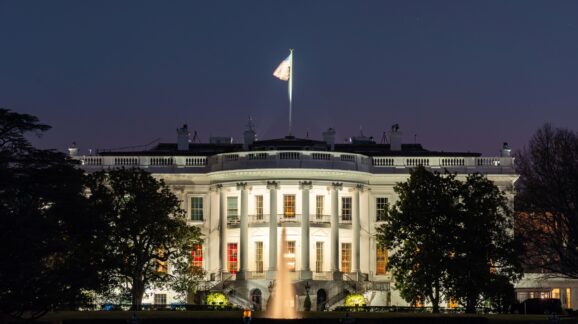Commencing deconstruction of the administrative state – Trump’s next 100 days

Photo Credit: Getty
Federal regulation costs trillions of dollars each year. Call it the “costberg”—a vast, submerged amalgam of rules, guidance, and paperwork reshaping the economy without a vote in Congress.
These hidden regulatory costs stack atop the $7 trillion Washington plans to spend this year. Surveys like our new 2025 edition of Ten Thousand Commandments track rulemaking, but the bigger threat today is regulatory “dark matter”—agency guidance, memos, bulletins, circulars, and more that sidestep notice-and-comment procedures but still command compliance. Add regulatory laundering through grants, subsidies, and procurement, and it’s clear that governance by “pen and phone” has only grown.
As noted over at Forbes, Donald Trump’s first term made real strides against this hidden state, from imposing a one-in, two-out rulemaking requirement to launching a formal inventory of regulatory dark matter. But COVID-19 derailed reform, fusing massive spending with regulatory expansion. Crisis management morphed into permanent governance, as both parties increasingly embrace flash policymaking when emergencies arise.
President Biden accelerated this trend. His “whole-of-government” mandates on climate, equity, and caregiving abandoned even pretense of cost-benefit discipline. His regulatory review reforms gutted Trump’s streamlining efforts, allowing far more federal rules to escape scrutiny.
Trump’s second administration has responded aggressively, issuing over 140 executive orders to deepen deregulation and roll back Biden’s progressive agenda. Still, as we note often, executive orders alone cannot secure limited government if Congress continues passing hyper-regulatory laws like the CARES Act, the Bipartisan Infrastructure Law, and the CHIPS Act. Spending-driven regulatory expansion remains a bipartisan habit; deficits topping $2 trillion even absent major wars or emergencies are proof of that.
Yet there’s reason for optimism. We always say most of the world’s wealth remains to be created. Free enterprise, though burdened, still drives prosperity. America’s bloated administrative state is increasingly seen for what it is: a barrier, not a builder.
As Trump’s first 100 days conclude, reform energy is growing. Regulatory budgeting, congressional approval of major rules, cracking down on dark matter, and even agency termination are now serious conversations. Trump’s Executive Order 14,219 calling for “commencing the deconstruction” of the administrative state captures the vibe.
Liberty’s unfinished business can’t wait. The next 100 days present a critical window to advance lasting reform before the next crisis demands more than we can afford to give.
For more, see: The new Ten Thousand Commandments, and “Liberty’s Unfinished Business: Trump’s First 100 Days Herald Tough Regulatory Battles Ahead,” Forbes.